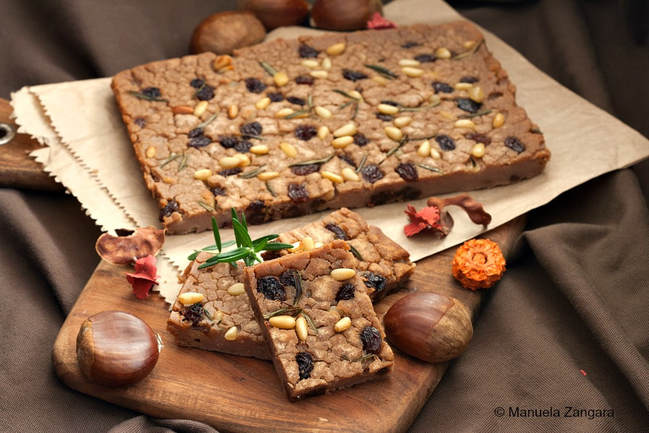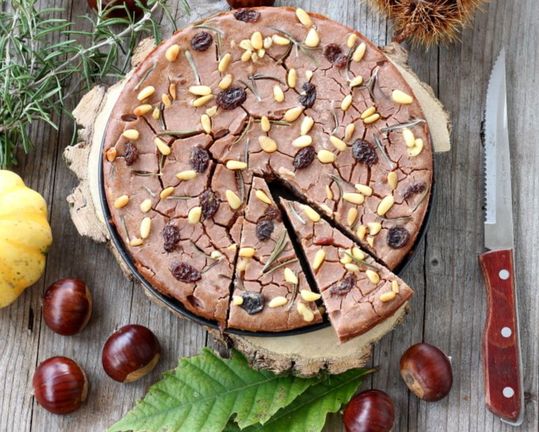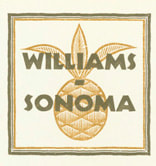|
When autumn comes to Tuscany, you will be able to enjoy Castagnaccio, a torta rustica made with chestnut flour and olive oil that has ancient origins. In the 1500s it was well known in Tuscany as cucina povera, a dish prepared by poor, peasant farmers and shepherds. Chestnuts were plentiful in the hills of the Apennines and easy to harvest, not only for its nutritious flesh but also for chestnut flour. Chestnuts (castagne) are rich in protein, calcium and vitamin A.
This torta can also be called baldino, ghirighio, toppone or pattona, depending on where you are in Italy. Local variations may include other ingredients, such as rosemary, orange peel and fennel seeds. There is even one romantic legend that says when its perfumed with rosemary, Castagnaccio is a powerful love potion--making and serving it the object of your affections will make them fall in love with you, and ask for your hand in marriage. Perhaps this is more than just a dish served during Natale, but also appropriate for Valentine's Day! In its earliest conception, it was an easy way to make a portable food (like an energy bar) that stored well for long periods, helping sustain poor contadini during long, harsh winters. According to Ortensio Landi (1553) in his “Commentario delle più notabili et mostruose cose d’Italia e di altri luoghi“ ("Commentary on the most notable and monstrous things of Italy and of other places"), he traced its origins to a man called Pilade from Lucca. By the nineteenth century however, the addition of pignoli and dried fruits morphed this spiced cake into a dessert deserving of the Christmas season and its popularity spread to Liguria, Piedmont and Emilia Romagna and even on the nearby French island of Corsica. Today you will find castagnaccio just about everywhere in Italy during Natale festivities. Keeping with Tuscan tastes, typically, no sugar is added because of the inherent sweetness in the chestnuts themselves and the addition of dried fruit and raisins. Castagnaccio is often served with ricotta, honey or sweet wines such as Vin Santo. 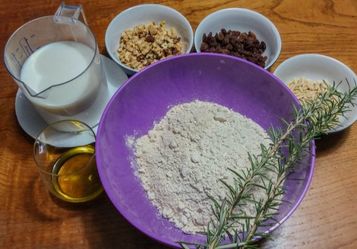
Ingredients
Optional: You can soak the raisins in rum, Amaretto or orange liquor instead of water for a more adult version.
Directions
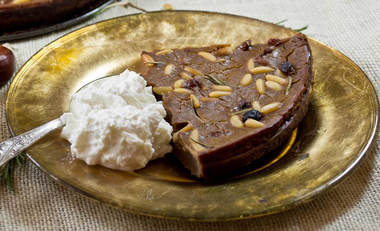
Serve with a glass of Vin Santo, and a dollop of fresh ricotta on the side, and drizzle both with a Tuscan honey of your choice.
Buon appetito! --Jerry Finzi
For further reading:
Chestnuts: The Italian Love Affair with Castagne Foto del Giorno: Chestnut Vendor Harvest Festivals in Italy: From Grapes to Wine, and More
|
Archives
May 2024
Categories
All
|

